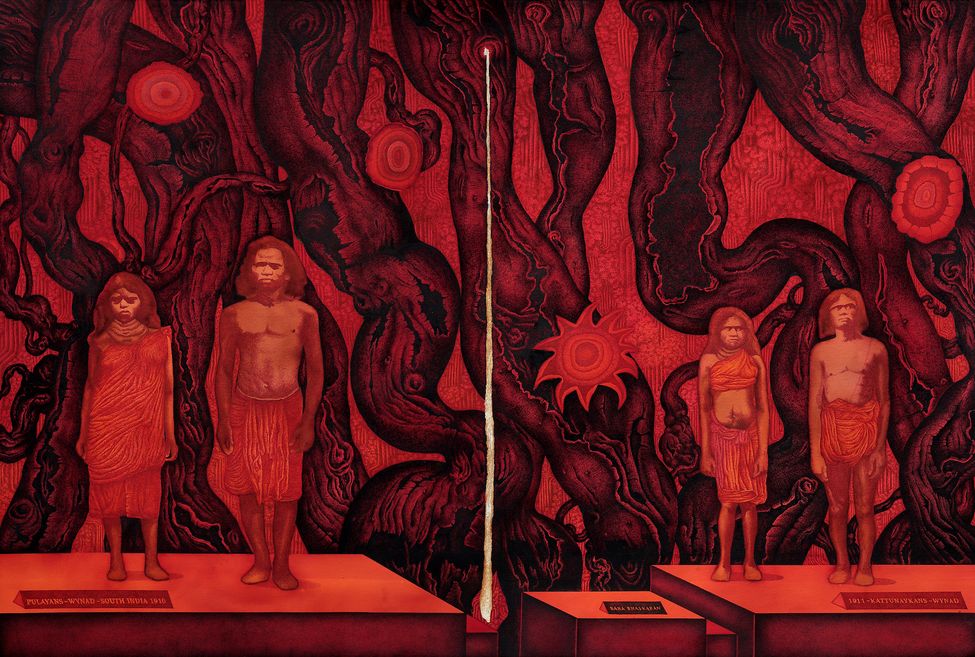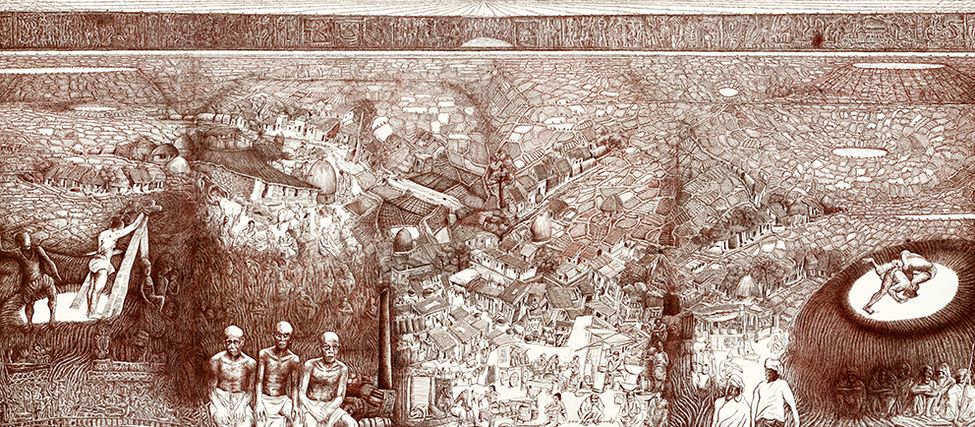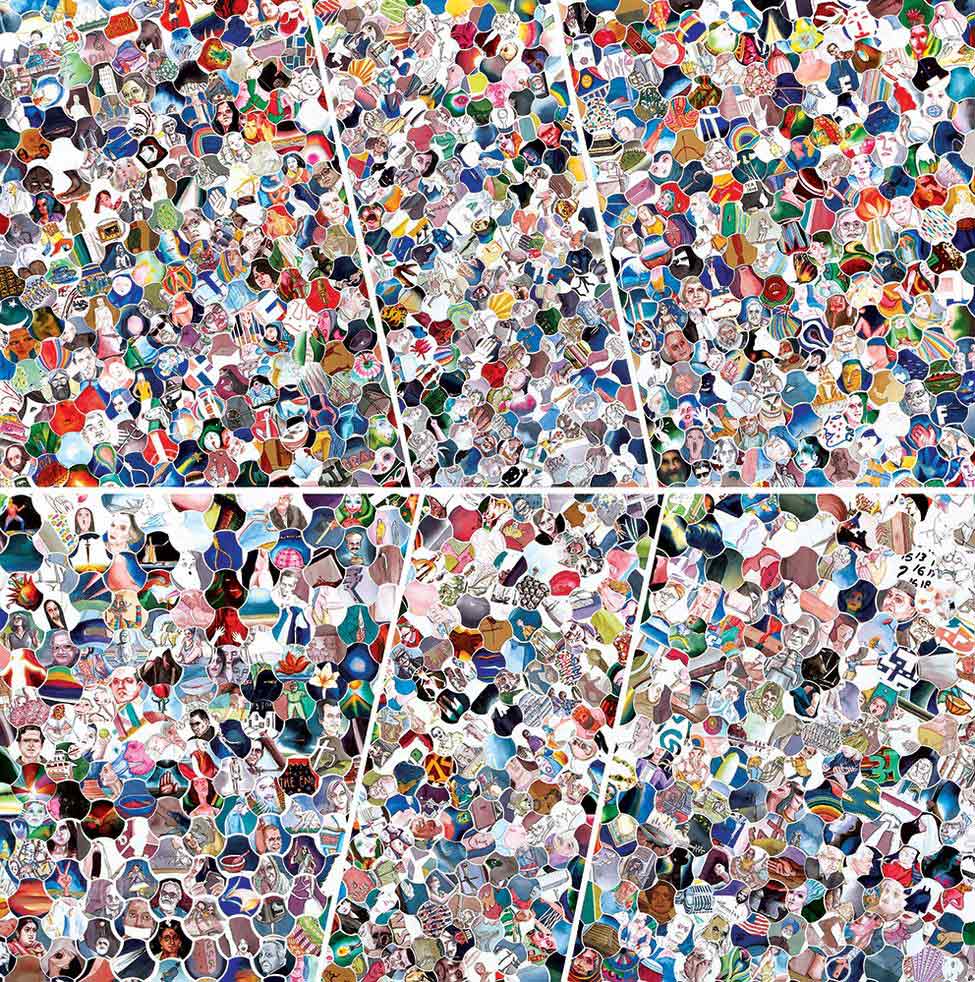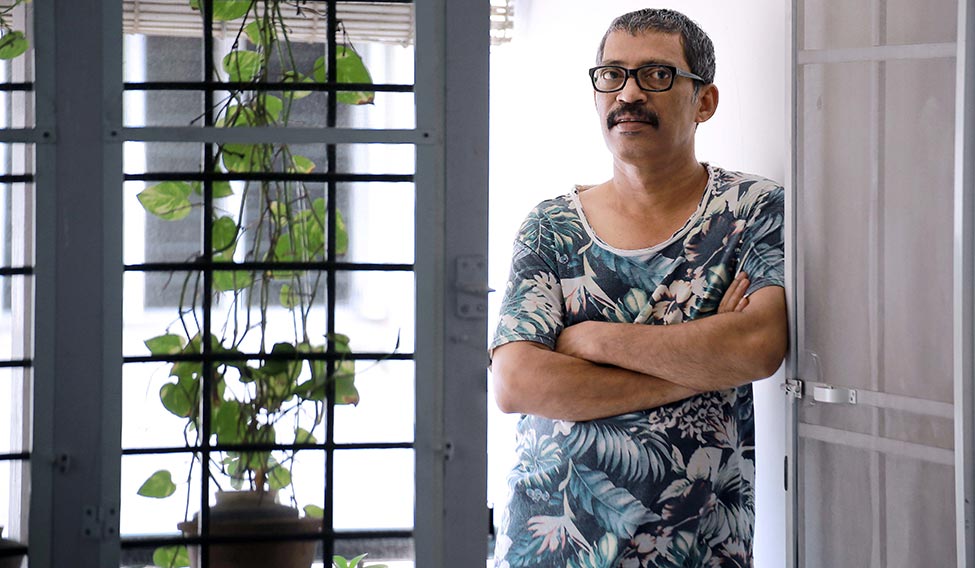An artist’s life is all about space and what fills it. The two are both separate and combined. After having had multiple exhibitions in India and abroad, I can vouch that the biennale is a versatile space—the physical space itself, and the people who inhabit it.
Art is fluid, and this absence of rigid borders often throws up conflicts. Is he intruding into my space? Is my space shrinking? Is his space better than mine? Space is not about square feet alone, but also about the feel, about visibility and perception. I was very content when Sudarshan Shetty, the curator, first showed me my exhibition space. This was my space and I needed to pour myself into it. Period.
And, I did it with my ‘Amazing Museum’ series. The work might be familiar to regular readers of THE WEEK. For example, Amazing Museum II and III are made up of illustrations that accompanied columns in this magazine. These were squarish watercolours on paper. I was then illustrating an incident or point in the column. They went to the biennale in a novel form, because I saw no sense in putting them up as they were. They now are part of two montages, 120cm x 240cm each. Each of those illustrations is now an interlocking tile. A tapestry of our times. An interconnected record of happenings, both humble and grand.
 Amazing museum I: Adivasis depicted as they would be in a museum of history. Photographs from 1910 of adivasi families from Wayanad, Kerala, used as reference.
Amazing museum I: Adivasis depicted as they would be in a museum of history. Photographs from 1910 of adivasi families from Wayanad, Kerala, used as reference.
During the assembly polls in 2015, Bihar pulled up a chair and sat on my mind, demanding to be drawn. So, most of Amazing Museum IV is that amazing state. Vistas and vignettes. Faces, and fears.
The humble have always inhabited the space between my ears. Humble people to humble vegetables. I poured them out into 50 drawings at the biennale. There is history, culture, politics and the personal. I have nothing to offer, but what haunts me.
Like I said earlier, the second component of the space is what inhabits it. The biennale is not just static art, but movies and music and lectures and performances. It is like people bringing baskets of shades and notes and thoughts and passing them around. They never go back with an empty basket. Most often each basket is fuller than it was in the beginning.
These people range from artists to art critics, collectors, students, farmers, NRIs and homemakers. When I exhibit in art galleries, I often get this question: “What did you mean by this?” Nobody asked me that at the biennale.
Every person seems to appreciate the works. At their own level, and against the background of their own memories and experiences. It is almost like they see familiar shades and shadows. I guess it is also because I express myself through drawing. It is the ancient root of art, right from cave paintings. There is that primeval connect, between people and lines.
 Amazing museum IV: A detailed and descriptive work that is a narrative of the past and a record of the history of Bihar and its people.
Amazing museum IV: A detailed and descriptive work that is a narrative of the past and a record of the history of Bihar and its people.
When the biennale was on, the statewide inter-school arts festival was being held in Kannur, 270km from Kochi. Biennale founder Bose Krishnamachari and five artists were there for a day, and their visit was covered by the media. Parents of participating students then made day trips to the biennale. These are people who had not heard of the event earlier, or people who thought it was not for them. These are the people who make the biennale special.
Foreigners who come to the biennale are surprised to find artists like me wandering around the exhibits. It takes some convincing to make them believe that I am an artist. “Yes, these are my works.” Apparently, in their countries, the artist is a mystic who shuns public contact. He reaches out only through his works. Here, a bunch of friends hired a van and came a long way, from the northern end of Kerala. Just to see the biennale. They gave me a jackfruit, bananas and a bagful of organic rice. Where else in the world would artists get things like these?
Another thing that impressed me at the biennale is the discipline of the viewers. When a rock band is performing, organisers usually have some muscle on standby. And, the crowd is clued in on the performers. For a classical music performance, you might not need the security. But, you need a knowledgeable audience. At the biennale, we get a mixed crowd and no trouble.
Many biennale spaces offer privacy, and I see young lovers walking in, holding hands. It is evident that they are very much in love. I totally get that. Very rarely does that turn into lust. Almost all are focused on the artwork. It is like someone else is in the room with them, talking to them. I think that someone is art. Now, isn’t that special?
 Amazing museum II-III: Two montages of illustrations by the artist that accompanied columns in THE WEEK. A record of happenings from our recent past.
Amazing museum II-III: Two montages of illustrations by the artist that accompanied columns in THE WEEK. A record of happenings from our recent past.






